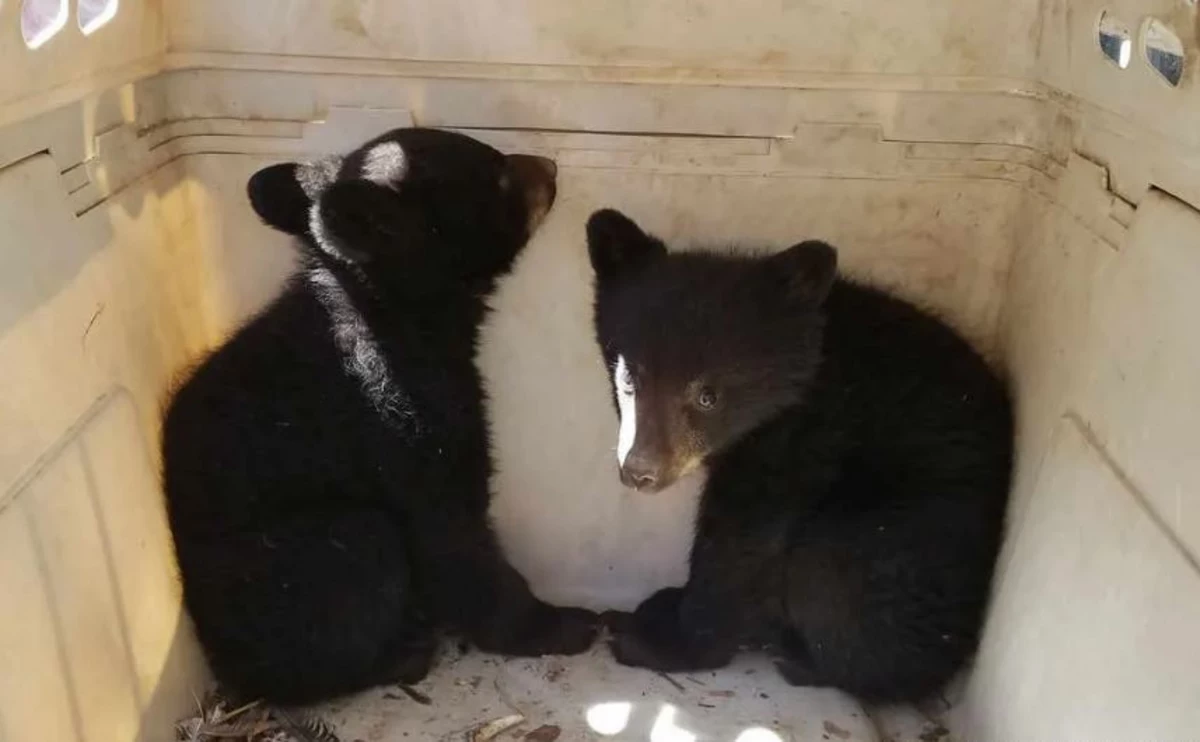Montana
FWP to repeal rule requiring liaison with nonprofits

Laura Lundquist
(Missoula Current) Partly due to an ongoing lawsuit, Montana Fish, Wildlife and Parks wants to eliminate a decades-old rule requiring the department to consult with citizen organizations on its projects and responsibilities.
On Friday, FWP will take verbal comment on the elimination of a rule that requires the department to maintain liaison with citizen organizations active in wildlife and sportsmen’s issues.
Written in 1976, the rule says staff will participate formally or informally with various groups, including “Montana Wildlife Federation, Montana Wilderness Association, Audubon Society, Ducks Unlimited, Trout Unlimited, Sierra Club, Environmental Information Center, Northern Rockies Action Group, various state and local outfitter and guide organizations, local unaffiliated rod and gun clubs, or any other citizen organization.”
The Feb. 8 release announcing Friday’s meeting said FWP wants to repeal the rule, because “it is archaic and no longer reflects how the commission or the department engages with the public in decision-making processes.”
At first blush, the repeal might appear to be an attempt to reduce public participation in the department’s decisions.
Jim Vashro, a retired FWP regional fisheries manager, said FWP manages a public trust – wildlife – for all citizens, so it needs all the communication tools it can get. He sees the rule as important to maintaining the exchange of ideas with the various groups and building understanding and support for proposals from both sides.
“It’s critical that (FWP staff) engage with the people who use the resource,” Vashro said. “Communication is always key. The department would probably still do communication (if the rule is repealed), but it’s nice having that ARM rule just in case something happens.”
During the past few years, there have been several examples of proposals that the department had to walk back because it didn’t ask for input from sportsmen first. For example, the commission had to reverse a 2022 decision to put a daily limit on the number of kokanee caught in Georgetown Lake after fishermen protested.
Another example was when hunters pushed back against a December 2021 proposal to reduce by half the number of special either-sex elk permits and restrict them to public land in eight elk districts in eastern Montana that are over population objectives. During the commission meeting, more than 40 hunters from various groups spoke against the proposal, which many suspected had a connection to the United Property Owners of Montana, a small but deep-pocketed private-property-rights group.
Some concerns about limited public information and input were validated when, during an October 2023 court settlement of a lawsuit alleging that the FWP commission lacked transparency, FWP attorneys acknowledged that the commission’s secretive practices constituted constitutional violations of public participation and the public’s right to know.
The final decree required the commission to attend training on open-meeting laws, post all public comments on proposals, and use only public-issued email addresses and telephones for commission business.
“It just shows that people care about how decisions are made. Without the rule, (FWP) could merely listen to one group, just make a decision, and there’d be no recourse for the other groups,” Vashro said. “Now I agree that, more and more, they use online resources, and in many cases, that’s a good way to meet. But it doesn’t promote good conversation – it’s kind of a one-sided deal.”
But some sportsmen’s groups are not so sure that the rule is still needed. Some say that the rule doesn’t keep FWP from listening to just one group. And now, there are so many more organizations and diverse demands in Montana than what existed in 1976 that interacting with them all is almost impossible. But one group in particular has complained that FWP violated the rule because it hasn’t interacted with them: the United Property Owners of Montana.
Following the previously mentioned December 2021 meeting where resident hunters helped defeat the elk tag proposal, the United Property Owners of Montana sued FWP and the FWP commission in April 2022. They alleged that FWP has failed to keep the elk population under control and that the FWP commission made an unlawful decision in February 2022 when it voted to maintain a limit on the number of hunting permits in nine eastern Montana hunting districts, all of which surround the Upper Missouri River Breaks National Monument.
In June 2022, a coalition of Montana hunting and conservation groups filed to intervene on behalf of Montana Fish, Wildlife & Parks against the United Property Owners of Montana. The coalition includes Missoula’s Hellgate Hunters and Anglers, Helena Hunters and Anglers, Montana Backcountry Hunters & Anglers, Montana Bowhunters Association, Montana Wildlife Federation, Public Land Water Access Association and Skyline Sportsmen.
The case has moved slowly since then, although oral arguments are finally slated for the end of the month in Fergus County. One of the claims that the United Property Owners of Montana has made in the lawsuit is that FWP staff have never attended one of their meetings, therefore it violated the rule.
If the rule is repealed, that claim becomes moot. And it avoids the risk that other groups would challenge the department with similar claims. Some sportsmen see value in that and dismiss concerns about any loss of communication, saying that groups can still reach out to department staff or submit public comments, as long as FWP adheres to Montana’s public participation laws. Only time would tell if the department or Montanans would notice a difference.
FWP did not respond to requests for comment. FWP paralegal Regina Reynolds has been scheduled to conduct the online hearing on Friday at 10 a.m. FWP will accept written comments until March 25.
Contact reporter Laura Lundquist at lundquist@missoulacurrent.com.

Montana
Gianforte declares disasters in Missoula and Mineral counties after extreme thunderstorm

Montana Gov. Greg Gianforte declared disasters in Missoula and Mineral counties Friday.
Thousands are still without power after an extreme thunderstorm swept the area Wednesday night.
The governor’s declaration could make state money available to aid in restoration efforts if the counties need it. Wind that whipped up to 80 miles an hour downed trees and power lines across the counties. The full extent of the damage is not yet known.
Gianforte’s declaration noted the counties are reporting emergency costs to repair critical infrastructure. That includes water treatment, city buildings and traffic control systems.
Missoula declared its own state of emergency Thursday morning.
Montana
Unemployment claims in Montana declined last week

Initial filings for unemployment benefits in Montana dropped last week compared with the week prior, the U.S. Department of Labor said Thursday.
New jobless claims, a proxy for layoffs, fell to 403 in the week ending July 20, down from 447 the week before, the Labor Department said.
U.S. unemployment claims dropped to 235,000 last week, down 10,000 claims from 245,000 the week prior on a seasonally adjusted basis.
Texas saw the largest percentage increase in weekly claims, with claims jumping by 24.9%. Kansas, meanwhile, saw the largest percentage drop in new claims, with claims dropping by 68.7%.
The USA TODAY Network is publishing localized versions of this story on its news sites across the country, generated with data from the U.S. Department of Labor’s weekly unemployment insurance claims report.
Montana
Renowned food safety lawyer discusses E. coli outbreak in Flathead County

KALISPELL — We’re following up on the E. coli outbreak in Flathead County that has left one person dead and at least 12 others infected.
The Flathead City-County Health Department (FCCHD) and Montana Department of Public Health and Human Services (DPHHS) are investigating the outbreak with preliminary investigations showing ground beef as the potential source.
Public health officials told MTN News that the investigation is ongoing and the names of the beef distributor and restaurants where the beef was sold will not be released at this time.
Renowned food safety lawyer Bill Marler represented families sickened from ground beef linked E. coli during the historic 1993 Jack-in-the-Box outbreak, which left nearly 700 people sick and caused the death of four children.
Marler says those infected through this E. coli outbreak have a right to seek compensation.
“Both from the restaurant for under-cooking but from my perspective also from the meat supplier and the slaughterhouse that put the contaminated food into the marketplace, in 2024 after you know 30-plus years, post Jack-in-the-Box, that shouldn’t happen,” said Marler.
Marler said full transparency between public health officials investigating the ground beef E. coli outbreak and the Flathead community is key as the investigation continues.
“The only reason that we have ill people at those restaurants with E. coli O157 from hamburger is that those hamburgers were not cooked properly,” said Marler.
“If you cook it to the standards that every state you know follows, which is 155 degrees, that kills E. coli, and so it’s a little odd that they haven’t named the restaurants, it’s frankly really bothersome that they haven’t named the supplier.”
Marler and his firm Marler-Clark have represented thousands of food poisoning victims over the last three decades.
He said cases linked to ground beef E. coli outbreaks are usually under-reported in the community, as symptoms vary from person to person.
“Every one person counted, there’s usually about 5-10 other people that go uncounted,” added Marler.
Jossolyn Becker with the Flathead City-County Health Department said the ground beef linked to E. coli has been removed with no threat of further contamination in the community.
She said the last known date of consumption of the product was on July 14.
“Any of the lot that was affected by this beef distributor has been isolated and it is no longer a concern at this point,” said Becker.
In a joint response to MTN News FCCHD and DPHHS – released the following:
“The investigation is ongoing and at this point in time we are unable to provide the name of the distributor or the names of the restaurants. We are planning to release a joint statement with DPHHS tomorrow to provide the most updated information available regarding this outbreak.”
-

 World1 week ago
World1 week agoOne dead after car crashes into restaurant in Paris
-

 Midwest1 week ago
Midwest1 week agoMichigan rep posts video response to Stephen Colbert's joke about his RNC speech: 'Touché'
-

 News1 week ago
News1 week agoVideo: Young Republicans on Why Their Party Isn’t Reaching Gen Z (And What They Can Do About It)
-

 Movie Reviews1 week ago
Movie Reviews1 week agoMovie Review: A new generation drives into the storm in rousing ‘Twisters’
-

 News1 week ago
News1 week agoIn Milwaukee, Black Voters Struggle to Find a Home With Either Party
-

 Politics1 week ago
Politics1 week agoFox News Politics: The Call is Coming from Inside the House
-

 News1 week ago
News1 week agoVideo: J.D. Vance Accepts Vice-Presidential Nomination
-

 World1 week ago
World1 week agoTrump to take RNC stage for first speech since assassination attempt



















